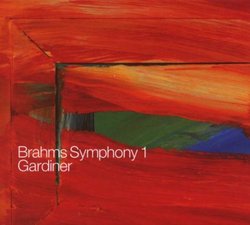Interesting and well played, but I doubt Brahms would recogn
Some Guy from Ohio | Columbus, OH United States | 06/13/2009
(3 out of 5 stars)
"The musicianship displayed on this recording is of a very high order, and the sonics are very good. This is a performance that creates a new Brahms First for the modern world, a Brahms that speaks to us.
This should not however be confused with Brahms as Brahms would have heard it. Brahms died in 1897, the phonograph was invented in 1877, and flat disc records in 1881. We have an ample auditory record of what musicians of Brahms' time sounded like, and this is not even close.
We have recordings of Joseph Joachim (the violinist for whom Brahms wrote his concerto) as well as other violinists of Brahms' time, and clearly vibrato and a lot of portamento were used. Joachim's vibrato is spare, but to use none at all, and no portamento, is not in keeping with the known performance practices of Brahms' time.
Beyond those primitive early recordings, some musicians who knew Brahms, conducted for Brahms, and heard Brahms conduct lived well into the mid-twentieth century, when electric recording techniques were available.
If you are interested in hearing something close to what Brahms must have heard, look into Felix Weingartner's recordings from the 1930's. Weingartner was in his mid-thirties when Brahms died; Brahms heard him conduct his Second Symphony, and liked what he heard. Weingartner also heard Brahms conduct his Third and Fourth symphonies.
The standards of orchestral playing were not as high in the 1930's as they are today, and there are imperfections, but this is the closest to "authentic" Brahms as it is possible for us to have. The recordings themselves were made using an electrical process with microphones, and are not primitive."
One fantastic CD
Osvaldo Colarusso | Curitiba, Paraná Brazil | 04/17/2009
(5 out of 5 stars)
"This CD pleased me very much.First of all the Monteverdi choir is, today, one of the most impressive vocal ensembles . The Mendelssohn, in this CD , for a Capella choir , sounds magnificent. And the version of the superb Song of Destiny is one of the best I heard. The first three tracks are the sufficient reason to buy this record , but after we can hear one of the most beautiful versions available of the first Symphony of Brahms. The orchestra play so well, and the transparency, all the time ,make you hear things that simply don't appear in others versions.I am very happy to hear this CD, and I'm anxious to listen the others Symphonies. After the wonderful work with the Cantatas of Bach, the Monteverdi Choir and Gardiner, with this superb orchestra,shows once more the serious intentions of this new label."

